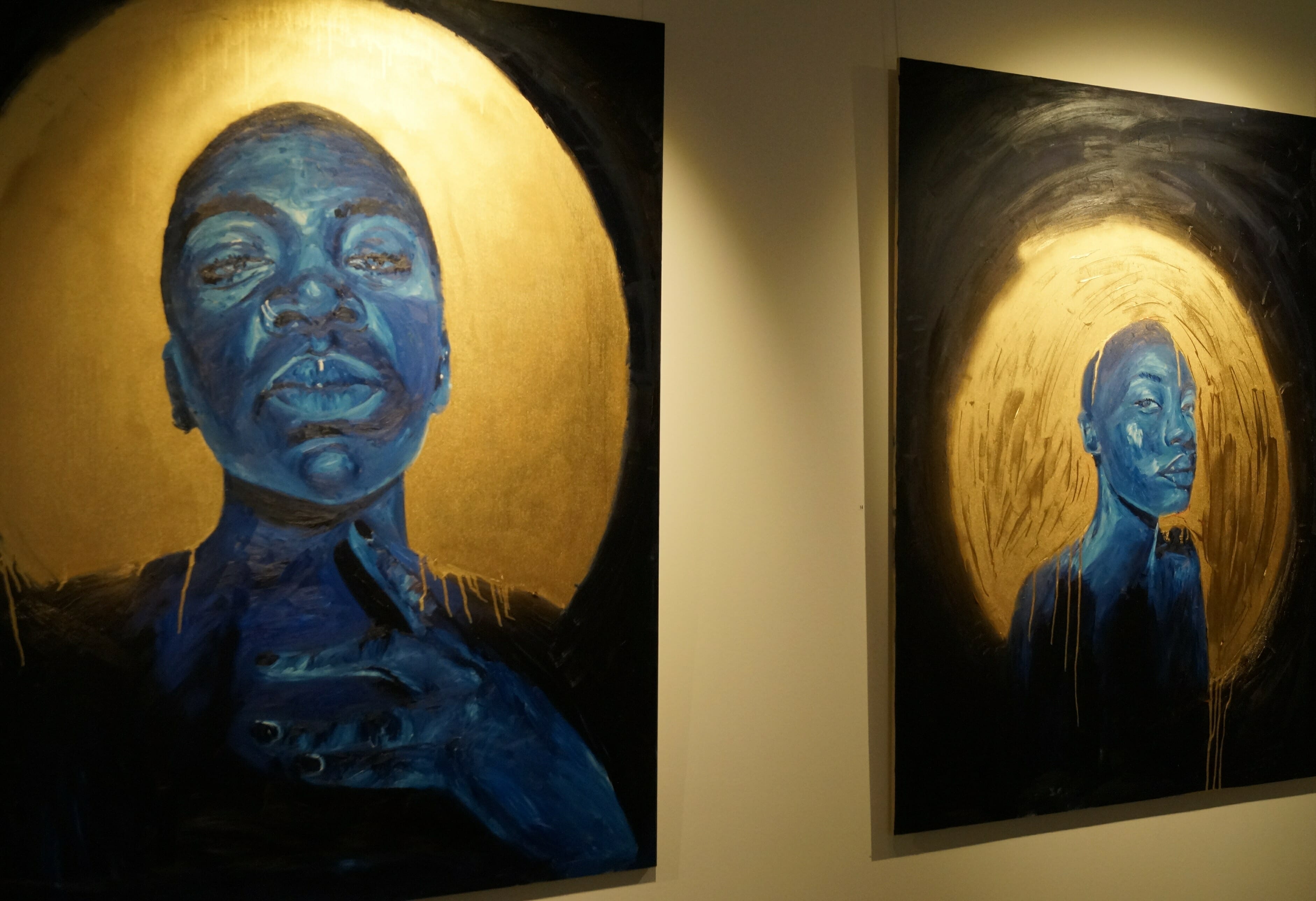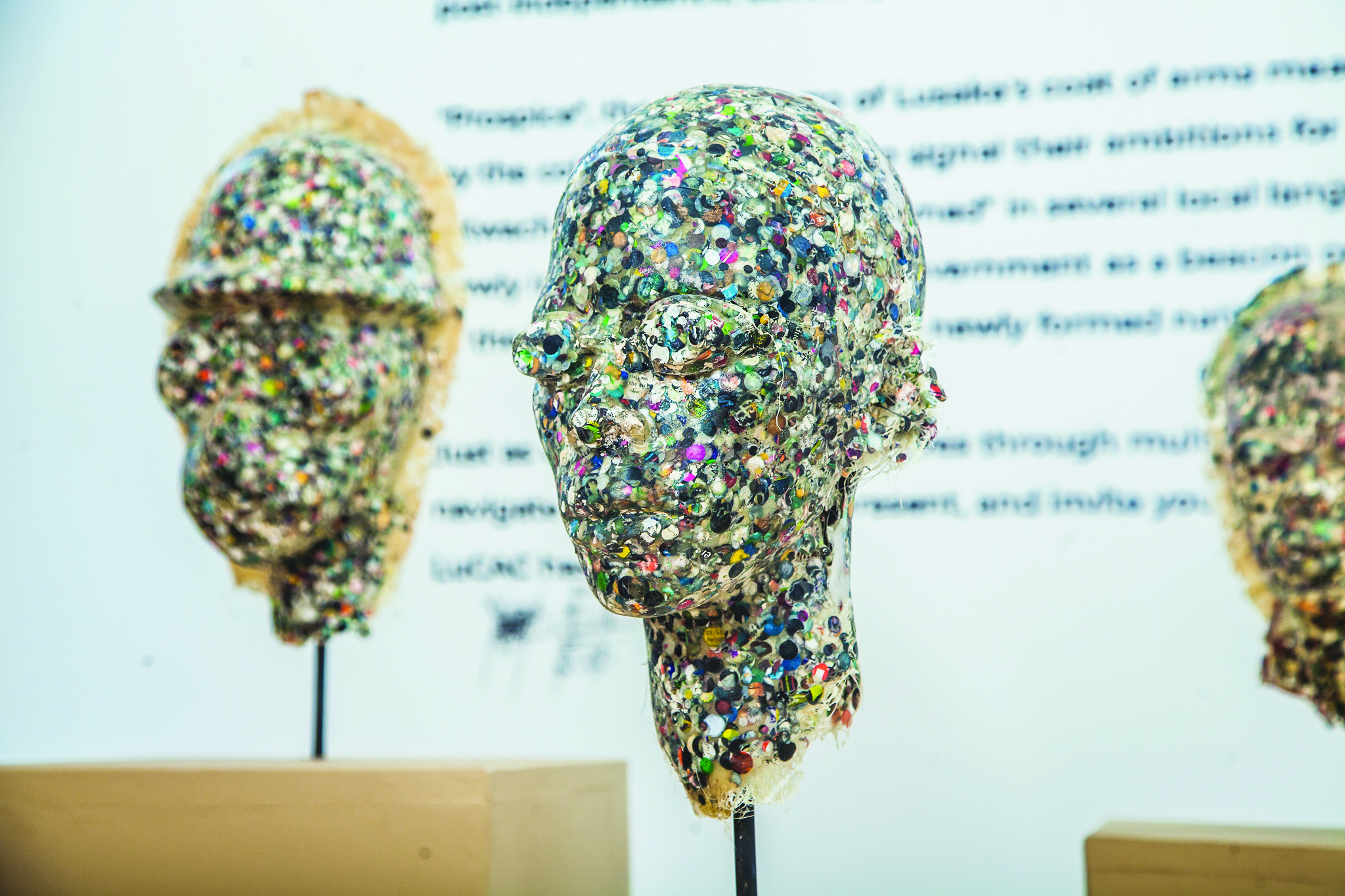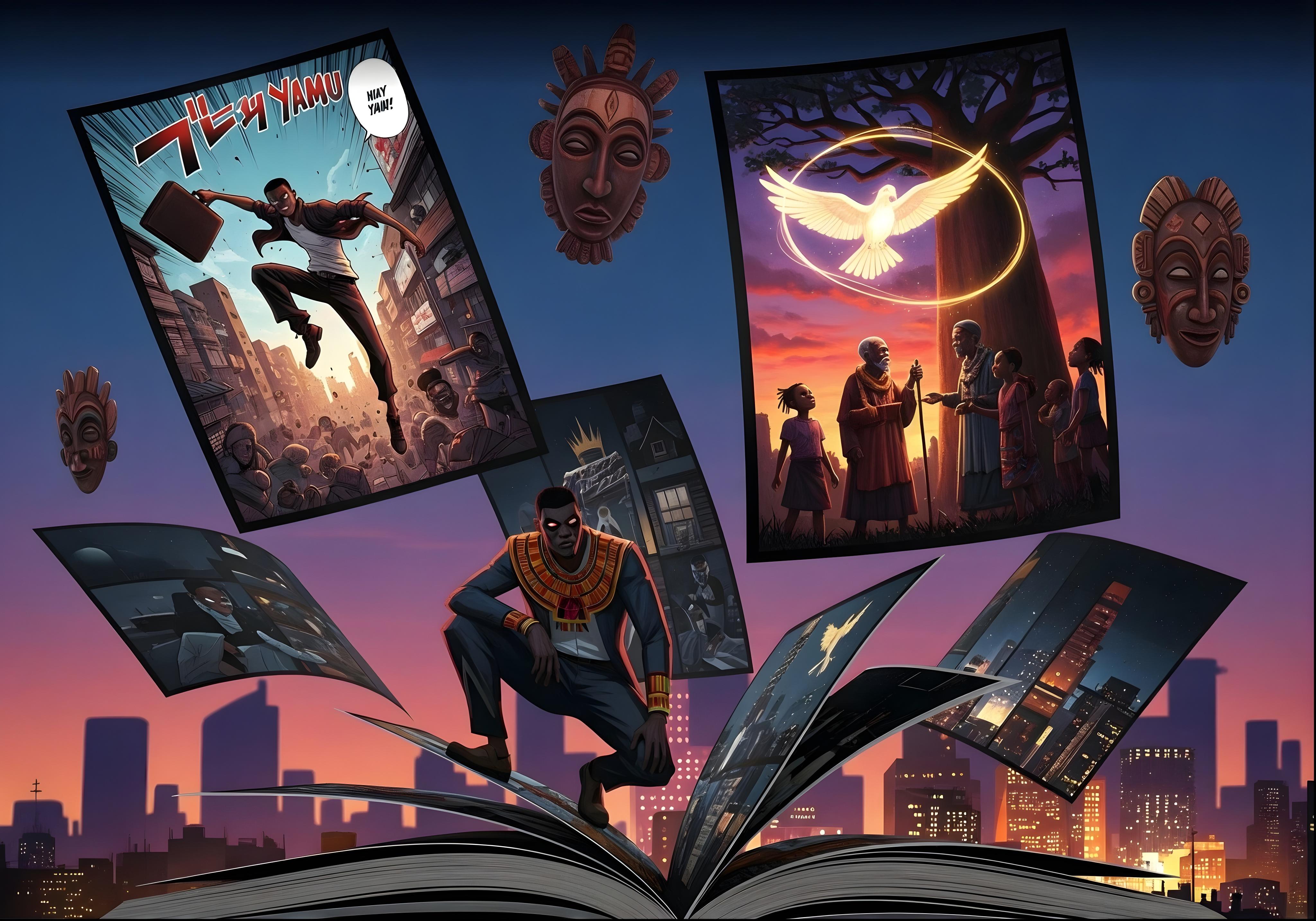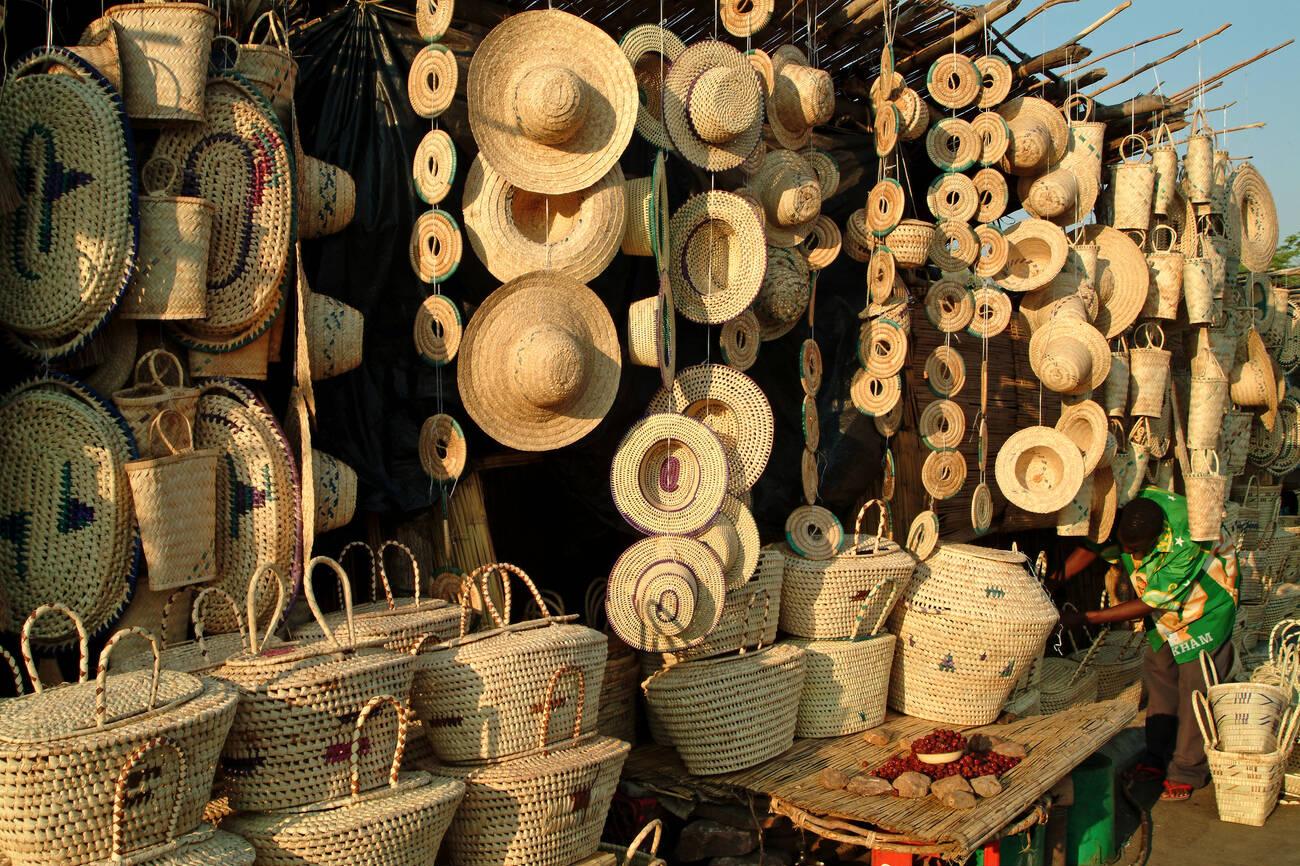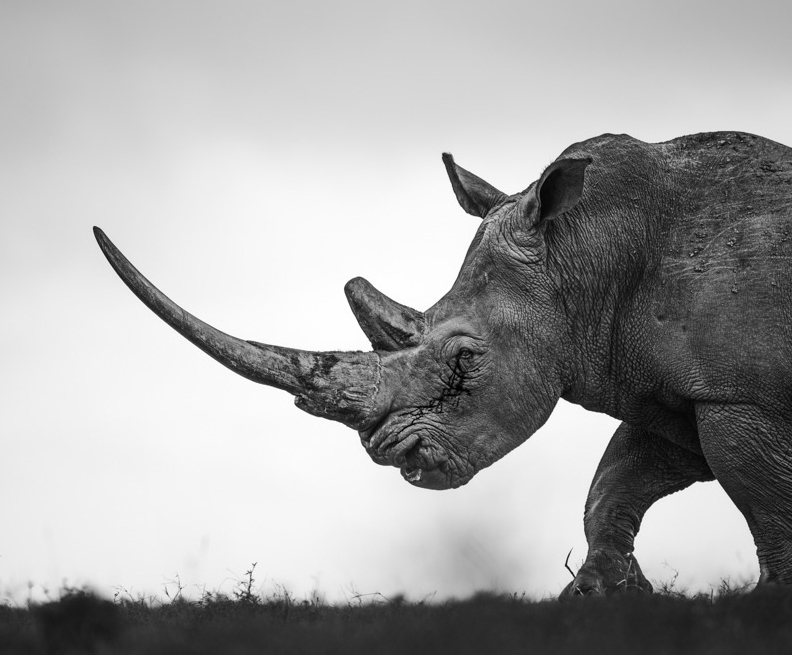Angela Chilufya lived a nomadic life early on. She was born in Kabwe, Zambia and lived there until her family, consisting of her mother and sister, moved to Namibia where they spent a few years before moving back to Zambia and then eventually England, all while she was still young.

Angela’s mother was encouraging of creativity when she was a child; she would bring home various pencil sets and instruments for her daughters. As a child Angela would copy drawings from magazines and unbeknownst to her she was laying the foundation for a career as an artist. When Angela was in secondary school and college, her family noticed her strengths and supported her artistic endeavours.
When I asked Angela when she knew she was an artist she shared, “That’s a bit tricky. I guess I knew when I was in my first year of college. I only recently started feeling confident in calling myself an artist and knowing that I am one after finishing my MA at Reading University.”

Angela recently held her first solo art exhibition, dubbed Part of Me, in Bristol, and shares what inspired the body of work as well as what the response was. “Part of Me was really me sharing the people who helped shape me. It was me sharing thoughts and intimate things about myself through how I interpreted certain elements of my life. A lot of the work was based on my relationship with my sister, as she is the greatest part of me. She is my biggest inspiration and motivation. I chose powerful stories and gave an almost immortal feel to my images to depict the power that these individuals have in my life. The exhibition was meant to be audio and visual, accompanied by voices of everyone who I am close to and intimately share my life with. I had been collecting voice notes for a long time and realised a lot of them were intimate conversations that helped me throughout my life. However, after playing them back to myself an hour before opening I got hit by nerves and chickened out! I wasn’t ready to share those just yet.”
Even without sharing the vulnerability of those personal voice notes the response to her exhibition was positive. Angela had a lovely experience listening to other people’s interpretations of her work, she exclaims, “Seeing people’s support for simple me? I’m still not over it!”
Organising an exhibition is a process and for Angela it was definitely a journey as she explains, “When I started organising my exhibition, I was recovering from surgery so I had plenty of time to search for spaces, plan pieces and paint. The only thing that held me back was my inability to sit long enough to finish a painting but once I could and was able to walk again it was quite simple. However, I think organising exhibitions comes quite easily to me from previous experience participating in smaller shows.”
Angela has worked using pencil, ball point pen, digital media, acrylic and more recently oil paint. I asked her which is her favourite to work with and if at all it’s important as an artist to pick one and stick with it. She enthused, “I don’t believe in sticking to one particular thing but that’s just me. I utilise all media and it helps me spark motivation and inspiration for the next piece in the next media. My current favourite is oil paint but that could change because in the summer I was working digitally a lot and refused to pick up a pencil! I think that the medium you choose to work in doesn’t define you as an artist but a style does and I can feel myself settling into a style after years of trying everything and anything.”
If you follow Angela’s work then you would have noticed that blue was the dominant colour in her latest collection. She explains, “I initially started working with blue because it was the colour I had available to me. I didn’t really care about the meaning of it until my lecturer challenged me last year in my thinking. At first I was like ‘why do we have to make everything deep in art? Can’t I just like it?’ After watching the movie Moonlight I remembered a quote that reads, ‘In moonlight, Black boys look blue’. This quote inspired me to create portraits that are drowning in or surrounded by darkness which represents black culture dying or being washed away due to the way people of colour are expected to conduct themselves in Western society. Exploring the history of the colour blue enabled me to make links between race and how humans react to colour.”
She adds that, “The insignificance and rarity of the colour blue allowed me to make links with race as there was once a time that black people were considered so greatly insignificant and not recognised as people by society just as the colour blue was. The colour blue symbolizes peace, trust, strength, loyalty and wisdom. Companies and hospitals often use the colour blue as it has a calming effect on the psyche. Through my pieces I equate these meanings to the figure my sister takes. Giving the viewer a sense of calm as well as making the figures appear strong and royal with the sense of a trusting relationship.”
We revisit the conversation of themes and process and I ask Angela if she has a set process when it comes to creating her art pieces and collections. She tells me, “I just start creating. I know that by tapping into my childhood, my relationship with my sister, friends I’m close to and even old relationships this allows me to start producing my initial pieces. I then see the similarities in images I’ve created and a theme comes to me! That or I just come up with a theme and sit on it for a while until inspiration or a pending deadline smacks me. I don’t believe I have a process but maybe one day someone will watch me from start to finish and let me know if I do have one.”
Art is deeply personal to Angela but the stories that she manages to tell with it and the way in which she depicts her subjects is universal. One can’t help but wonder what her next works will be and if she will continue to speak on cultural and societal subject matters. One thing is for sure, Angela Chilufya has a message to share and she continues her endeavours in art. We, the audience, will be waiting to behold what she has to share.
